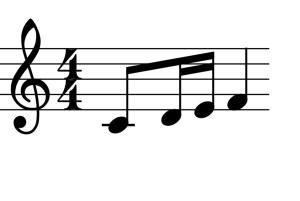Dottes notes
Today we introduce something fundamental in music writing:
The dotted notes.
- What are dotted notes?
- What effect do they have on notes?
- How can we read and write dotted notes?
These are only some of the questions we will answer.
Moreover as in all lessons, you will find lots of music reading exercises with audio podcast for practice.
Have a good lesson!
Learning material of this lesson
| 6 videos | 23 mins |
|---|---|
| 1. Introduction to the new lesson | 2m 45s |
| 2. Dotted notes | 3m 43s |
| 3. The dotted crotchet | 5m 56s |
| 4. A trick to read music as best as possible with dotted notes | 5m 30s |
| 5. The practical exercise of music reading | 2m 58s |
| 6. The exercise to learn to play dotted notes | 2m 08s |
| + 1 pdf file | |
| + 11 audio files |

The access to this lesson is reserved to Premium Membership subscribers.
If you are already registered you can simply log in.
Not a Premium Member yet?
Register today, or upgrade if you are already a free member, to access this and all the other lessons of the premium membership.
Free Access
With a Free account you gain immediate access to 15 lessons of piano, theory, harmony, music reading and composition (36 videos).






